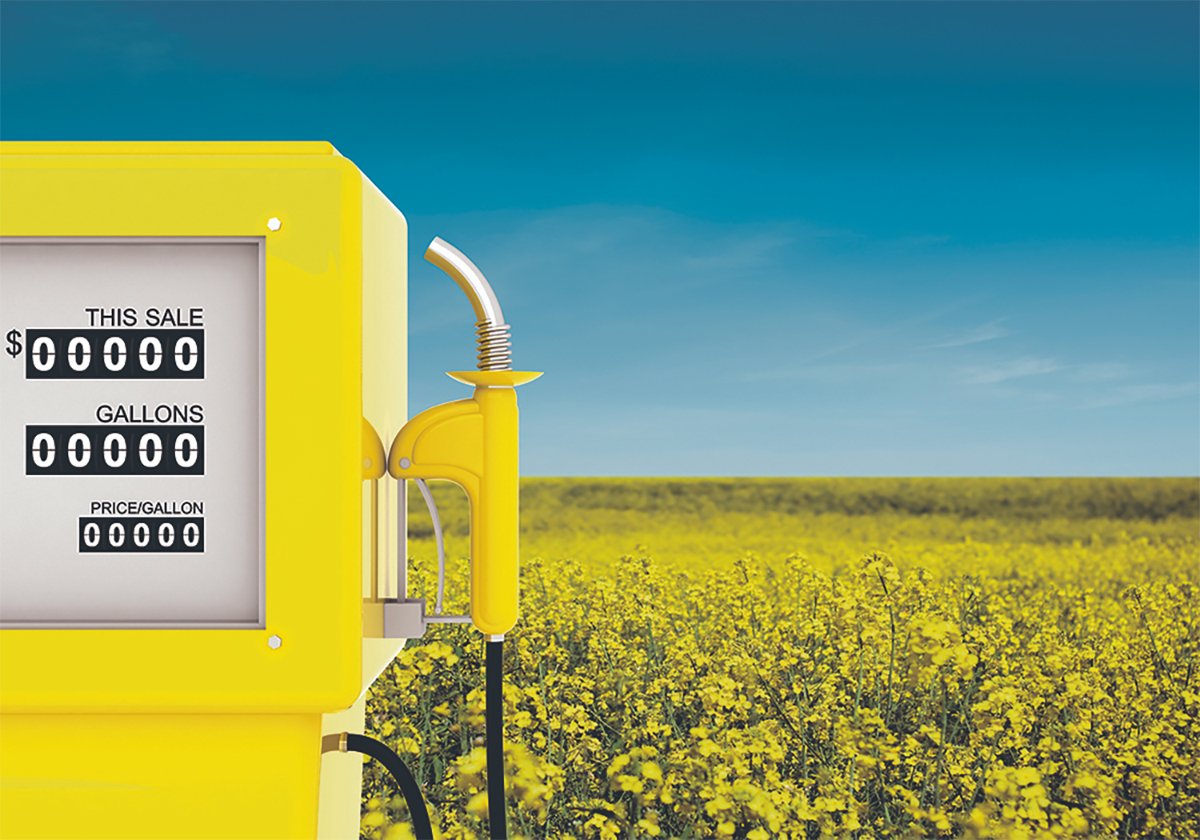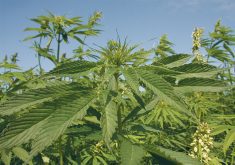BRANDON — A typical private sector, commercial market it sure ain’t.
But the booming market today and in the near future for renewable diesel from canola is very real, despite being a product of government.
“It really is about policy and regulations that are driving the market for renewable fuels like renewable diesel,” said Chris Vervaet, the executive director of the Canadian Oilseed Processors Association, to farmers at Manitoba Ag Days.
“There’s a huge drive to reduce greenhouse gas emissions from transportation fuels, and biofuels are a proven and a viable option and governments are starting to recognize that more and more.”
Read Also

Biofuel sector happy with federal budget
Advanced Biofuels Canada says new Biofuel Production Incentive is a lifeline until CFR amendments are in place.
Vervaet said that conservative estimates of annual Canadian canola demand for biofuel production could jump from two million tonnes now to almost seven million tonnes of crop by 2030.
While that might sound far-fetched to farmers who have heard decades of predictions of ethanol, biodiesel and other biofuels becoming a big thing only to see little production ever happen, it’s different this time, Vervaet said.
Right now, a massive increase in canola crushing is taking place with most of the major canola crushers adding lots of new capacity, which should see crushing go from today’s maximum of 11 million tonnes per year to 17 million within a few years. That increase will be enough to supply the biofuel needs, while still only representing about one-quarter of the total canola crop produced on the Prairies if farmers can begin producing 30 million tonnes per year by 2030.
Meanwhile, some of Canada’s big oil and gas companies are jumping into the renewable diesel business, with Federated Co-operatives Ltd., Imperial Oil and Suncor among the fossil fuel processors pegging canola as a future feed stock for expansions they’re building or planning.
Renewable diesel isn’t the same thing as biodiesel, something many do not understand yet. Biodiesel is made in a process that creates a fuel that must be blended with fossil diesel at rates seldom safe over five percent, and which do not work well in cold conditions. Renewable diesel is made through a process similar to that of fossil diesel and can be used without blending with fossil fuels since it is virtually identical within an engine. That’s part of why governments are so keen on renewable diesel, as well as its ability to slash GHG emissions in a big way.
Vervaet said the demand is coming from several government approaches, which vary from jurisdiction to jurisdiction and country to country.
The biggest demand growth is coming from low carbon fuel standards being adopted in both the United States and Canada at a national level, plus some states like California. That approach requires fuel producers to cut their emissions of carbon in intensity but doesn’t dictate how they should do that. Fortunately for canola, Vervaet said, the crop’s oil is a perfect source of low-carbon feedstock.
Places like Quebec take a more old-school approach, with biofuel-use mandates setting stricter inclusion amounts.
Last summer, the U.S. biofuel regulator approved canola as a renewable diesel source, which throws open the door to greater fuel consumption.
“The market there is exploding,” said Vervaet.
“It’s growing by leaps and bounds.”
Having a market based mostly upon government laws and regulations might seem risky, since governments change and rules can be cancelled and reversed. However, Vervaet said the pressure to reduce GHGs from fuel is growing, it’s global and it’s non-partisan.
“These are priorities regardless of political stripe,” said Vervaet.
The offshore market is growing, but Vervaet said the industry here is focused on North American demand and production. Both Canada and the U.S. are well along the road to major biofuel consumption.
“Arguably, it’s these two countries where we see the biggest opportunities for renewable fuels over the next five to 10 years,” said Vervaet.
But canola faces a challenge from soybeans, which are a preferred feedstock in the U.S. Crushers and biofuel producers are seeing the same opportunities for soybeans as Canadians see for canola.
Canola might be ideal as a feedstock, being much higher in oil content than soybeans, but the demand for biofuels is growing fast and processors will focus on whatever they can get that best meets their needs. Canada will need to produce enough canola to support renewable diesel production or risk seeing a smaller share of biofuel demand, Vervaet said.
















